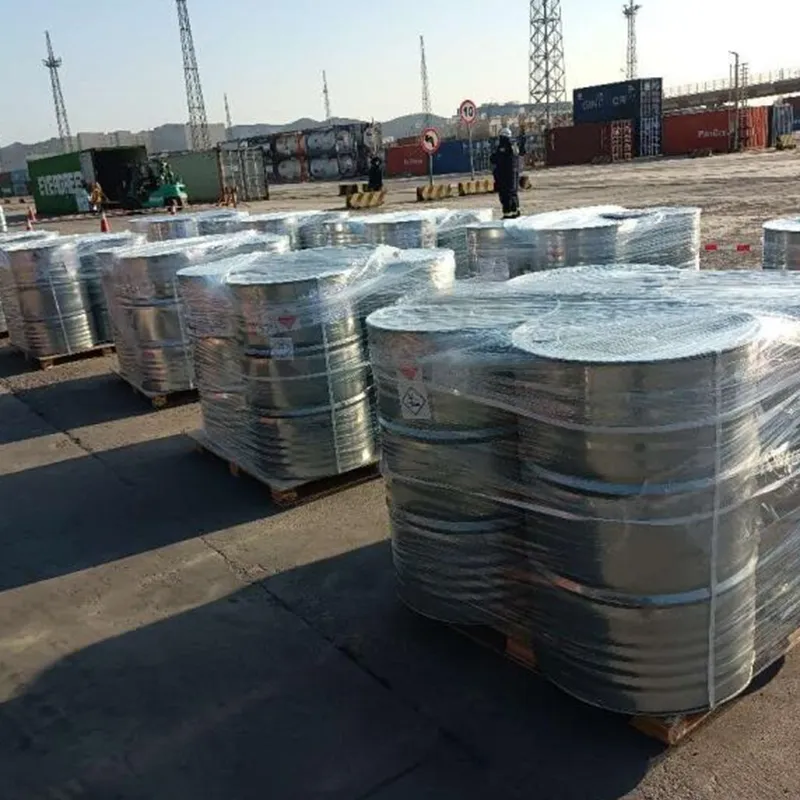
monosodium glutamate factory
The Monosodium Glutamate Factory An Insight into the Heart of Umami Production
Monosodium glutamate, commonly referred to as MSG, is a flavor enhancer that has found its way into kitchens and restaurants around the globe. Its savory taste, often described as umami, has been cherished by chefs and home cooks alike. At the heart of MSG production lies the monosodium glutamate factory, a complex facility that transforms raw materials into this sought-after culinary ingredient.
The Chemistry Behind MSG
Monosodium glutamate is the sodium salt of glutamic acid, one of the most abundant amino acids in nature. The production of MSG involves a biochemical process called fermentation, which harnesses the power of microorganisms. The primary ingredients for MSG production are starches or sugars derived from sources like corn, sugar beets, or sugarcane. Through a sequence of fermentation processes, these carbohydrates are converted into glutamic acid, which is then neutralized with sodium to produce monosodium glutamate.
The Production Process
The journey to MSG begins with the selection of raw materials. High-quality starches or sugars undergo hydrolysis, a process that breaks them down into simpler sugars. These sugars are then fed into fermentation tanks, where carefully selected strains of bacteria, typically a species of Corynebacterium, thrive in optimal conditions of temperature and pH. These microorganisms metabolize the sugars, producing glutamic acid as a byproduct.
After fermentation, the broth containing glutamic acid is acidified, and the glutamic acid is extracted through a series of filtration and purification steps. The final stage involves neutralizing the glutamic acid with sodium to form monosodium glutamate. The resulting product is then crystallized, dried, and packaged for distribution, ready to enhance dishes across various cuisines.
The Role of the Monosodium Glutamate Factory
monosodium glutamate factory

A monosodium glutamate factory plays a critical role in meeting global demand for this flavor enhancer. These factories are equipped with state-of-the-art technology to ensure a high level of efficiency and quality control. Automation in fermentation, extraction, and packaging processes helps to minimize the risk of contamination and maintain the purity of the MSG produced.
Additionally, the factories adhere to strict safety and quality regulations, ensuring that the final product is safe for consumption. Quality control samples are routinely tested for composition, ensuring that the MSG meets established standards. This diligence not only supports food safety but also fosters consumer trust in the product.
Environmental Considerations
The production of MSG is not without its environmental impacts. As with any industrial process, factories must manage byproducts and emissions responsibly. Many modern monosodium glutamate factories implement sustainable practices to minimize their carbon footprint. This includes recycling waste materials, optimizing energy consumption, and sourcing raw materials from sustainable suppliers.
Additionally, because fermentation processes rely on renewable resources, MSG production can be considered more eco-friendly compared to synthetic flavor enhancers derived from fossil fuels. Factories are increasingly focusing on sustainability to align with consumer preferences for environmentally conscious products.
Conclusion
The monosodium glutamate factory is a vital player in the global food industry, producing one of the most popular flavor enhancers in the world. Through a sophisticated process of fermentation and rigorous quality control, these facilities ensure that MSG meets consumer demand while also adhering to safety and environmental standards. As culinary trends evolve and the appreciation for umami grows, the role of the monosodium glutamate factory will continue to be significant in bringing savory flavors to our tables.
-
Industrial Chemicals: Quality & Purity for Every IndustryNewsAug.28,2025
-
Nitrile Rubber Honoring Strict Production StandardsNewsAug.22,2025
-
Aspartame Ingredients Honoring Food Safety ValuesNewsAug.22,2025
-
Fertilizer for Balanced Plant NutritionNewsAug.22,2025
-
Cyanide Gold Processing with High Purity AdditivesNewsAug.22,2025
-
Formic Acid in Textile Dyeing ApplicationsNewsAug.22,2025
-
Aluminum Hydroxide Gel in Skincare ProductsNewsAug.22,2025
Hebei Tenger Chemical Technology Co., Ltd. focuses on the chemical industry and is committed to the export service of chemical raw materials.
-

view more DiethanolisopropanolamineIn the ever-growing field of chemical solutions, diethanolisopropanolamine (DEIPA) stands out as a versatile and important compound. Due to its unique chemical structure and properties, DEIPA is of interest to various industries including construction, personal care, and agriculture. -

view more TriisopropanolamineTriisopropanolamine (TIPA) alkanol amine substance, is a kind of alcohol amine compound with amino and alcohol hydroxyl, and because of its molecules contains both amino and hydroxyl. -

view more Tetramethyl Thiuram DisulfideTetramethyl thiuram disulfide, also known as TMTD, is a white to light-yellow powder with a distinct sulfur-like odor. It is soluble in organic solvents such as benzene, acetone, and ethyl acetate, making it highly versatile for use in different formulations. TMTD is known for its excellent vulcanization acceleration properties, which makes it a key ingredient in the production of rubber products. Additionally, it acts as an effective fungicide and bactericide, making it valuable in agricultural applications. Its high purity and stability ensure consistent performance, making it a preferred choice for manufacturers across various industries.





